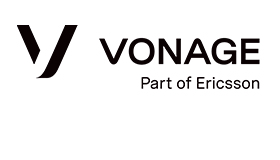Ashley Unitt of NewVoiceMedia discusses changing customer expectations and how they may impact how your organisation operates.
The essential principles of customer service are timeless, but consumer expectations are not. Customers have always wanted a friendly, efficient and reliable service, but with the development of new technology, their expectations have been raised.
They want a more efficient service than before. They don’t just want friendly; they want to feel like the service has been personalised for them.
The old adage of “know your customers” is also still as true today as it ever was. And with consumer behaviour changing rapidly, businesses need to stay up to date with customer expectations.
So, here are 10 trends changing (and often raising) consumer expectations:
1. Social media is changing the definition of what’s “fast”
We’re each connected to an instant feed of live updates, breaking news and messages. We can post something on social media and get instant feedback from friends. And, according to Global Web Index, 28% of time spent online is social networking.
This has effectively shortened the time consumers expect it to take a brand (or anyone) to reply to a message.
When asking about a product or service, 66% of consumers expect a response to their query on the same day, and over 40% expect a reply within the hour, as per a Lithium Technologies study.
2. The online world is changing how efficient we expect a business to be
A quick Google search can tell you just about anything you need to know. As a result, consumers have little patience when companies simply don’t know something.
Consumers expect data to be at companies’ fingertips – from accurate stock information to delivery dates and customer records. And with this wealth of data and the technology to support it, consumers often feel like there’s no excuse for getting it wrong.
3. The rise of self-service has led to a generation happy to help themselves
From self-checkouts to FAQ pages and call centre IVR, consumers are more willing than before to try to solve their problems themselves.
This doesn’t mean that they no longer want to call and talk to a real person, but it does mean that through clever use of self-service tactics, contact centres can save time and money.
4. The “always on” culture means customers expect 24/7 service (or as close as possible)
We live in an age where virtually everyone has a smartphone in their pockets, connecting them to just about every aspect of their lives.
This is a device that’s always on and always connected. We’ve grown used to being able to find the information we need, contact whoever we want and even listen to whatever music we’d like, whatever time of day.
Consumers don’t expect to have to break this habit for a business. While 24/7 call centres may not be possible, consumers expect longer opening hours and weekend support.
5. E-commerce has become commonplace – and shoppers no longer expect to pay for the convenience of it
When e-commerce began, delivery costs were standard. It was well and truly part of the deal of online shopping.
Now that online service is mainstream, it seems wrong to pay for something like delivery – consumers now want free next-day delivery as standard.
6. Channel or device-hopping habits mean customers expect omnichannel service
Customers see a brand, not a department. They can’t understand why a call centre agent can’t remember a Twitter conversation they had with the brand the day before.
This is particularly significant because 60% of consumers change their contact channel depending on where they are and what they’re doing.
As consumers move between channels, they should receive a consistent service and the experience should feel like one big conversation.
7. Social media has made customers feel more empowered
Social media has made it easier than ever before for consumers to share their thoughts with a wide audience. There are even some shoppers who have a larger social following than brands.
But even the average consumer is connected to at least 150 people on Facebook and to around 140 people on Twitter.
Today, companies have to tackle an audience with audiences – get it right and their message could spread like wildfire. Get it wrong and it’s a PR disaster.
All of this has led to many consumers feeling more empowered. They know that if they complain publicly on social media, they’re likely to get a better response than if they complain privately.
8. The data-driven online world means consumers expect a personalised service
The whole online experience is now personalised – from social media to the way Google personalises our search results. It only makes sense for customer service to be personalised too.
Consumers expect you to remember them – they expect to be treated as an individual and not as just another customer. In practice, this means your agents need to have access to their whole communication history, their buying habits and preferences.
9. Our mobile-focused culture means customers expect your site and customer service to be mobile-friendly
Mobile is changing the way we all live our lives. It connects us to people, brands and information – all of the time.
All aspects of your customer experience should therefore be mobile-friendly – from your website to your customer service. Mobile shopping and service is no longer an extra but a necessity.
10. Social media means customers expect you to be “listening”
With social media, everything is out there in the open. This “open book” approach to socialising has led to an expectation that brands should be monitoring any mentions on social media and responding accordingly.
Whether this is a direct complaint or message or whether it’s just a mention, consumers expect brands to be listening and ready to respond.

Ashley Unitt
Consumers may expect more from brands than they did before, but with the right technology, there’s no reason why any business can’t meet (and exceed) the rising customer expectations.
With customer service now the key competitive differentiator, make your customer experience a priority and you’ll soon see huge rewards.
This blog post has been re-published by kind permission of Vonage – View the Original Article
For more information about Vonage - visit the Vonage Website
Call Centre Helper is not responsible for the content of these guest blog posts. The opinions expressed in this article are those of the author, and do not necessarily reflect those of Call Centre Helper.
Author: Vonage
Published On: 28th Jan 2019 - Last modified: 29th Jan 2019
Read more about - Guest Blogs, Vonage






 Vonage is redefining business communications, helping enterprises use fully-integrated unified communications, contact centre and programmable communications solutions via APIs.
Vonage is redefining business communications, helping enterprises use fully-integrated unified communications, contact centre and programmable communications solutions via APIs. 










